Clipart tagged: ‘assyrian architecture’
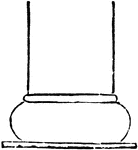
Base of a Column in a Bas-Relief from Kuyunjik
Some reliefs portray small façades of temples with capitals. This figure brings out prominently…

Capital and Entablature from the Rock Tomb of Darius
The columns in the ruins of Persepolis are circular and slender, and have capitals and bases. The capital…

Capital from the Ruins of Persepolis
Other capitals are more compact, where from the lower part, which is in the shape of a globular vessel,…
Restored Capital from the Ruins of Persepolis
Other capitals are more compact, where from the lower part, which is in the shape of a globular vessel,…
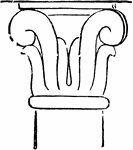
Capital in a Bas-Relief from Kuyunjik
Some reliefs portray small façades of temples with capitals. This figure shows an affinity, although…
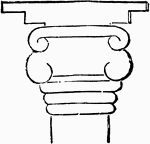
Capital in a Bas-Relief from Kuyunjik
Some reliefs portray small façades of temples with capitals. This figure brings out prominently…
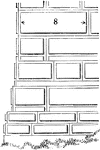
Elevation of Platform at Pasargadæ
The workmanship of the white marble columns, and of the large squared stones which are joined without…
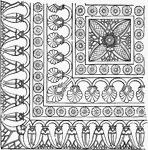
Part of the Floor Decoration from North Palace, Nineveh
This portion of a pavement-slab in the North Palace at Nineveh has a certain accordance with the Grecian…

Guilloche Ornament Painted on Burnt Clay, from the Ruins of Nineveh
Guilloche, usually spelled without the acute accent on the final e, describes a repetitive architectural…
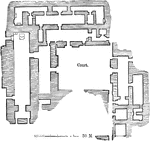
Floor Plan of the Palace at Nimrud
One peculiarity is visible in all Assyrian buildings, namely, that all the chambers are very narrow…
Pillar of a Table in an Assyrian Relief
Representing the pillar of a table, bears a strong resemblance to an Ionic capital as displayed in Asia…

Pillar on a Lion's Back
In the fragment of a relief from Kuyunjik columns occur which rest on a cushion-shaped base on a lion's…
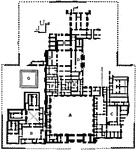
Plan of the Palace at Khorsabad, 722–705 BC
This is a diagram of the Palace of Khorsabad, 10 miles north–east of Nineveh, near Mosul, Iraq.…

Ruins of Persepolis
Persepolis was the ceremonial capital of the Persian Empire during the Achaemenid dynasty. Persepolis…
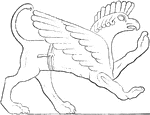
Sculptured Griffin from the Sculptures in the Ruins of Nineveh
A representation of an Assyrian griffin that adorned their buildings prior to the Persian conquest.
Sculptured Ornamental Border from the Ruins of Nineveh
Over the Winged Bulls were painted other acts of the king surrounded by his eunuchs and warriors, and…
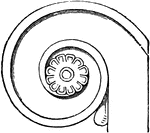
Volute of the Persian Column
Other capitals are more compact, where from the lower part, which is in the shape of a globular vessel,…
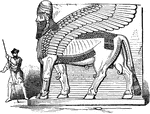
Winged Bull from Nimrud
The Sumerian word lama, which is rendered in Akkadian as lamassu, refers to a beneficient protective…